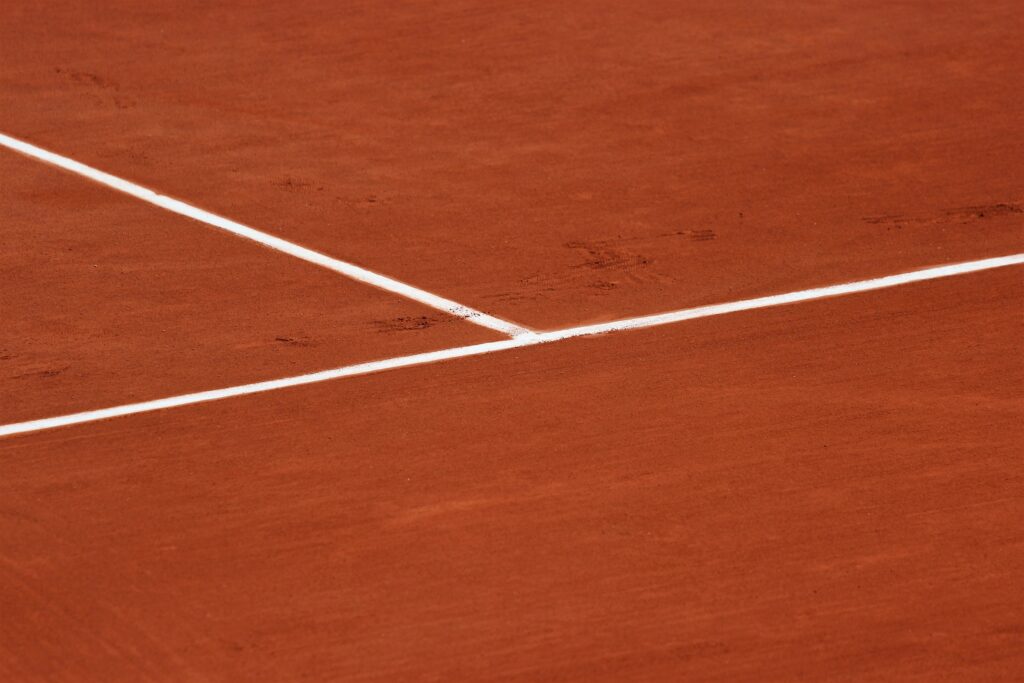Clay Court Characteristics
Court Speed: Slow
Bounce: High
1. Slide Then Hit
When playing on clay there is less traction underfoot so learning how to slide is essential if you want to be able to play on clay to a good level. The key to sliding on clay is to slide then hit so you are balanced on contact with the ball rather than hit then slide. Improving your lower body strength and balance is beneficial to playing on any court surface, however, very useful when sliding on clay so you have the stability to be balanced. Another tool to help your clay court game and traction underfoot would be to wear appropriate clay court tennis trainers. To conclude, slide then hit, don’t hit then slide and build your confidence up by practicing change of direction and agility drills on the clay.
2. Hit With Height & Spin
Hitting with height and spin is essential on any court surface, however, extremely effective on clay for a couple of reasons. Firstly, with the high bounce of a clay court, hitting with height and spin can see your opponent playing balls at shoulder height, possibly even over shoulder height making it extremely awkward and difficult. Nadal uses this strategy very effectively, hitting high balls over the net with loads of topspin to the backhand of his opponent. Second, because a clay court slows the ball down making it harder to hit a winner than on a grass or hard court, height and spin allow you to hit a consistent ball with depth in the court keeping your opponent back (although stats show the first four balls of the point, serve plus one, return plus one, is the most effective way to win on clay).
3. Bullet Proof Your Shoulders
With high bouncing balls and a slightly more unpredictable bounce in comparison to a hard court (balls off the lines and built up lumps of clay) there is a chance you will be playing more balls at shoulder height, possibly higher if you don’t step in and take the ball within your hitting zone. For this reason the condition of your shoulder joint is extremely important. Bullet proofing your shoulders does not mean being able to press huge amounts of weight overhead, it means working on thoracic spine mobility (foam roll overhead reach, rotation exercises), scapular control (retraction exercises, rows) , shoulder mobility and shoulder strength (overhead kettlebell carry).
I hope this post was of value to you. I’d love to hear your thoughts, please do send me a message on Instagram (simonjamescoaching).
Thank you for reading.
Simon James



